The Evolving Role of the Modern Princess in Fashion
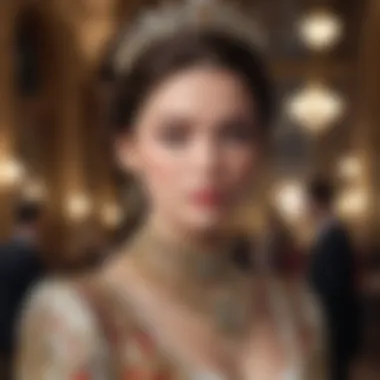
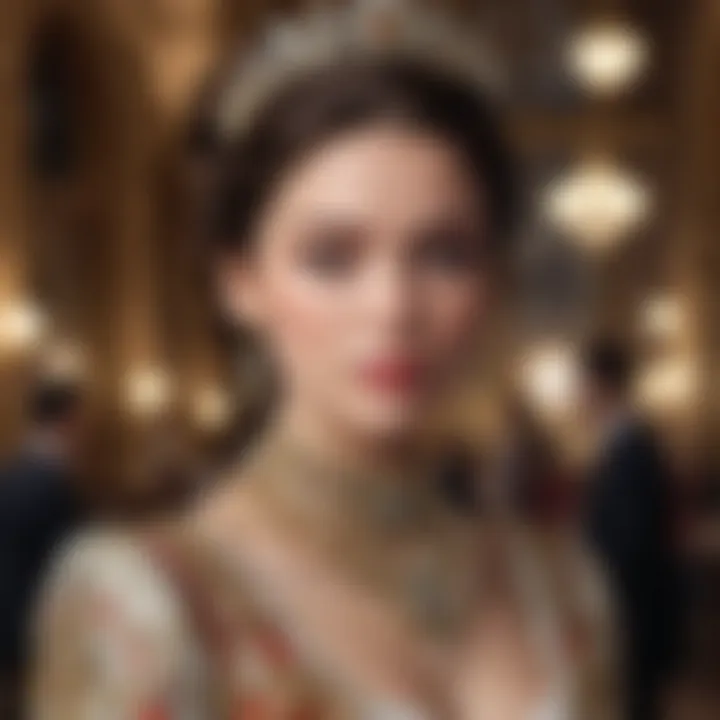
Intro
The contemporary interpretation of the princess archetype plays a unique role in fashion and beauty today. This notion transcends literal representations of royalty and delves into the ways modern women express themselves through style and aesthetics. Understanding this evolution helps uncover how historical influences have shaped current trends and practices. Women are not merely imitating princesses in the traditional sense; instead, they are reimagining what it means to embody power, grace, and resilience.
As we navigate through the complexities of this topic, it is essential to emphasize themes such as personal style, cultural standards, and sustainability in fashion and beauty choices. The modern princess is both an aspirational figure and a reflection of ongoing societal changes. By exploring these elements, we can inspire women to embrace their own identities while considering the environmental impact of their choices.
Key Trends
Overview of Current Fashion Trends
The fashion industry continually adapts, responding to demands for inclusivity and sustainability. Current trends reflect a departure from overly opulent designs and lean more towards simplicity and elegance that promotes individuality. Styles now favor versatility, allowing princess-like outfits to be both fashionable and functional.
- Minimalism: Clean lines and neutral colors dominate many collections.
- Mixed Textures: Fashion now embraces an array of materials, enhancing the overall narrative of an outfit.
- Heritage Styles: There's a revival of vintage-inspired designs that marry modern aesthetics with historical elements.
Popular Beauty Trends
Beauty practices have also experienced significant change in recent years. There is a growing focus on natural beauty, advocating for skincare that enhances one's features rather than masks them.
- Clean Beauty: Consumers increasingly seek products free from harsh chemicals.
- Personalization: Tailored skincare regimens based on skin type and concerns are gaining traction.
- Inclusivity: Brands are providing a wider range of shades and formulations suitable for all skin tones.
Beauty Tips and Tutorials
Skincare Routines for Different Skin Types
Recognizing that skin varies widely among individuals is vital. Tailored routines can address specific concerns, whether it be dryness, oiliness, or sensitivity.
- Oily Skin: Use oil-free cleansers and lightweight moisturizers. Incorporate salicylic acid for breakouts.
- Dry Skin: Opt for creamy cleansers and rich moisturizers with hyaluronic acid.
- Sensitive Skin: Choose unscented, hypoallergenic products with calming ingredients like aloe vera.
Step-by-Step Makeup Tutorials
Making makeup approachable is essential for those wanting to embrace their inner princess. Step-by-step guides can demystify the application process and promote confidence.
- Prep Skin: Start with a moisturizer suited to your skin type.
- Foundation: Apply a breathable foundation that matches your skin tone.
- Eyes: Enhance eyes with neutral shades for a soft look or bold colors for impact.
- Lips: Finish with a vibrant lip color that complements the overall palette.
Sustainable Practices
Understanding Sustainable Fashion
Sustainability is now a key concern in fashion, aligning with the principles of modern princesses who are conscious of their impact on the planet. This includes understanding materials, production processes, and sustainable sourcing. Fashion choices should reflect values that prioritize the environment and ethical labor practices.
- Eco-friendly Materials: Consider fabrics like organic cotton or Tencel.
- Second-hand Options: Thrift shopping is not only sustainable but also offers unique finds.
- Quality over Quantity: Invest in fewer, high-quality pieces that last longer.
Tips for Sustainable Beauty
Beauty routines can also embrace sustainability. Simple changes contribute to a more eco-conscious approach.
- Reusable Accessories: Use washable cotton pads instead of disposable ones.
- Bulk Buying: Opt for larger sizes to reduce packaging waste.
- DIY Products: Explore homemade beauty treatments using natural ingredients.
"The princess of today reflects strength and resilience, navigating through challenges while embracing beauty that is sustainable and unique."
As we weave through the fabric of modern princesshood, the message is clear: each woman can redefine her own narrative in fashion and beauty. By drawing from historical influences and adopting current trends, personal expression becomes a powerful tool of empowerment.
Prolusion: Defining the Modern Princess
In the context of fashion and beauty, the modern princess represents a significant transformation from traditional royal imagery. Understanding this evolution is crucial. Today's princess is less about lofty ideals and more about relatability and empowerment. This section will explore various elements that define the modern princess, including cultural significance, historical roots, and its impact on contemporary beauty standards.
Historical Context of Princess Imagery
The image of a princess has been shaped by centuries of tradition and societal expectations. Historically, princesses were often viewed through a lens of luxury and privilege. Their attire was meticulously crafted, reflecting not just their status but also the values of the time. From the elaborate gowns of the Renaissance to the iconic dresses of the Victorian era, this historical context plays a vital role in defining what a princess symbolizes today.
Moreover, the fairy tale princess has been central to popular culture since the advent of storytelling. Disney's animated features have played an undeniable role in shaping perceptions of princesses. These characters, often depicted as flawless and kind-hearted, set a standard for beauty and grace. However, such portrayals also created a distance between the princess and the average woman. This vast historical backdrop is essential to understanding the current depictions of a modern princess in fashion.
The Princess as a Cultural Icon
In contemporary society, the modern princess serves as a cultural icon, representing ideals of strength, independence, and style. This transformation is evident in various domains, including fashion, film, and social media. Women today are drawn to images of princesses who are both aspirational and attainable. This dual nature allows for broader interpretation of what it means to be a princess, as cultural narratives shift to emphasize individuality.
Furthermore, the princess archetype is now often associated with resilience and empowerment rather than mere beauty. For instance, public figures like Meghan Markle and Kate Middleton have redefined royal engagement, showing that being a princess encompasses more than just fashion. They highlight causes and champion social issues, which repositions the princess as a role model.
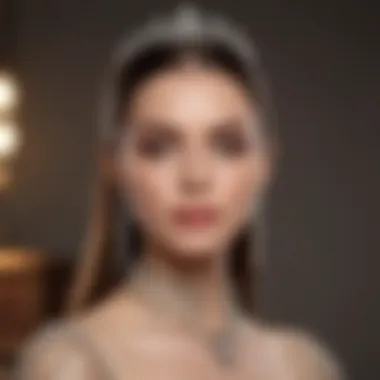

In summary, the evolving role of the princess in culture reflects broader shifts in societal values. As we explore further, it’s essential to acknowledge how these dynamics influence fashion and beauty, creating a narrative that inspires modern women. The modern princess is no longer just a distant figure; she is a reflection of the complexities and aspirations of contemporary life.
Fashion Evolution: From Distant Royalty to Relatable Icons
The evolution of fashion among modern princesses reflects a significant shift from a world of distant royalty to representations that resonate with everyday individuals. In the past, princess imagery was primarily tied to unattainable standards and lavish garments meant to signify status and lineage. Today's modern princesses wear fashion that is more approachable yet still retains a degree of elegance associated with their royal identity. This transformation is crucial as it highlights the intersection between heritage and contemporary societal norms.
The modern princess embodies a complex image that embraces both tradition and innovation. The fashion choices seen on contemporary royals and celebrities are not merely dictated by grandeur; they are influenced by cultural contexts and a growing desire for relatability. This shift encourages women to express themselves in ways that are authentic to their lifestyles, while still drawing inspiration from the vibrant royal narrative. The emphasis on relatability has made the concept of a princess more inclusive, allowing for personal style variations that reflect individual tastes and values.
Influence of Fashion Designers on Royal Aesthetics
Fashion designers play a pivotal role in modernizing the princess aesthetic. Iconic labels such as Alexander McQueen and Givenchy have crafted pieces that merge classical elegance with modern trends. The result is a wardrobe that respects royal traditions yet feels current, allowing princesses to connect with broader fashion dialogues.
While classic silhouettes remain, designers incorporate contemporary fabrics and innovative techniques. The engagement of up-and-coming designers like Erdem and Emilia Wickstead further diversifies the aesthetic, blending sophistication with creativity. As these designers push boundaries, they also spotlight sustainability, integrating eco-friendly practices that resonate with a more conscious audience.
With the rise of sustainable luxury, modern princesses demonstrate how the past can inform a more mindful future in fashion.
Celebrities Redefining the Princess Narrative
Celebrities are instrumental in redefining what it means to embody a princess in today's world. Figures like Meghan Markle and Kate Middleton inspire countless women not just through their fashion choices but by embodying values of resilience and empowerment. Their public appearances and selections often merge high fashion with accessible brands, showing that a princess can appear both royal and relatable.
Stars like Taylor Swift and Beyoncé also contribute to this evolving narrative. Their influence extends past the runway into personal branding, where the concept of a princess entwines with themes of self-expression and individuality. Popular culture now interprets the archetype of the princess through various lenses, encouraging diverse expressions of beauty and style.
To sum up, the fashion evolution from distant royalty to relatable icons marks a significant cultural shift. By embracing contemporary influences and increasing accessibility, the modern princess reflects not just her heritage, but also the values and aspirations of women today.
Beauty Standards: The Princess and Body Image
The notion of beauty has been shaped significantly through the lens of the princess archetype. Historically, princesses were often depicted with unattainably perfect features, creating benchmarks for beauty that many strive for but few can achieve. This article section focuses on the role of beauty standards linked to the modern princess and their impact on body image. The relationship between royalty and beauty speaks volumes about societal expectations. By understanding this connection, we can explore how these standards affect individuals and how they are evolving in contemporary contexts.
Changing Perspectives on Beauty
In recent years, there has been a shift in how beauty is perceived in the context of the princess narrative. Once characterized by narrow definitions of beauty that favored slim figures and flawless skin, the modern princess represents something broader and deeper. Today’s standards are becoming more inclusive, reflecting a variety of body types, skin tones, and features.
Princesses are starting to embody the idea that true beauty is not confined to one image. Instead, it incorporates a variety of experiences and identities. This change extends to media representation as well, with more diverse characters being portrayed in films and literature. Thus, the modern princess challenges outdated norms and fosters acceptance among women of all ages. This evolution encourages young girls and women to embrace their unique attributes and to celebrate differences rather than aspire for unrealistic ideals.
"The beauty of a princess today transcends appearances. It is about strength, resilience, and authenticity."
Inclusivity in Princess Representation
The representation of princesses in today’s fashion and culture also highlights the importance of inclusivity. This shift is crucial in breaking down the barriers of traditional beauty standards. Contemporary media and fashion increasingly showcase princesses of various backgrounds, body shapes, and looks, making the image more relatable and aspirational for various audiences.
Inclusion extends beyond appearance; it also encompasses the experiences and stories of different cultures. For instance, animated films are beginning to feature heroines from diverse backgrounds, highlighting a broader interpretation of what it means to be a princess. This not only enriches the character's narrative but also provides girls with role models who reflect their own identities.
Recognition of different beauty types leads to a cultural shift in the definition of royalty. Rather than representing an exclusive elite, princesses now symbolize empowerment and self-confidence. The narrative around modern princesses encourages self-acceptance and body positivity, inviting a more inclusive dialogue about beauty.
Through these changes in representation and perspective, the modern princess serves as a beacon of hope, illustrating that elegance and grace transcend mere physical appearance. As society continues to embrace these evolving standards, women everywhere can find inspiration in the idea that confidence and kindness define true beauty.
Sustainable Practices: The Eco-conscious Princess
The modern princess has evolved significantly, reflecting not only the changing attitudes towards royalty but also the growing awareness about environmental responsibility. The concept of sustainable practices is of paramount importance in today's fashion and beauty discourse. For a figure traditionally associated with luxury, the eco-conscious approach challenges the framework that is often taken for granted. This section explores the significance of sustainable choices within the princess archetype and examines how these decisions can contribute positively to both personal expression and the health of our planet.
Sustainability is more than a trend. It signifies a fundamental shift in how individuals, especially influential figures like modern princesses, approach fashion and beauty. As these icons adopt eco-friendly choices, they signal to their audience that style does not have to compromise ethics. This section details how the choices made by these figures can inspire their followers to consider the environmental impact of their consumer behavior.
Ethical Fashion Choices
The practice of ethical fashion centers around principles such as fair trade, labor rights, and the use of sustainable materials. When modern princesses opt for brands that follow these principles, they not only support ethical practices but also elevate the visibility of companies prioritizing these values. For example, brands like Stella McCartney and Reformation incorporate sustainable materials like organic cotton and recycled fabrics while offering stylish designs.
Some benefits of ethical fashion choices include:
- Support for workers and communities that produce the clothing.
- Reduction in environmental impact through sustainable sourcing and manufacturing.
- Promotion of transparency within the fashion industry, encouraging other brands to follow suit.
These practices serve as a powerful reminder to consumers. When they see princesses supporting ethical fashion, it reinforces the message: what one chooses to wear can have impactful consequences.
Promoting Sustainable Beauty Products
The realm of beauty is not exempt from the shifts toward sustainability. Modern princesses play a crucial role in advocating for sustainable beauty products. These princesses often collaborate with brands that utilize natural ingredients and recyclable packaging. This partnership elevates the importance of being conscious not only about what one wears but also about what one puts on their skin.
Promoting sustainable beauty products entails several considerations:
- Opting for brands that avoid harmful chemicals and prioritize natural ingredients.
- Choosing products available in eco-friendly packaging or in bulk to minimize waste.
- Supporting companies that engage in responsible sourcing and production methods.
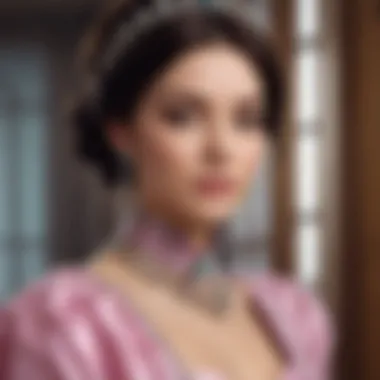
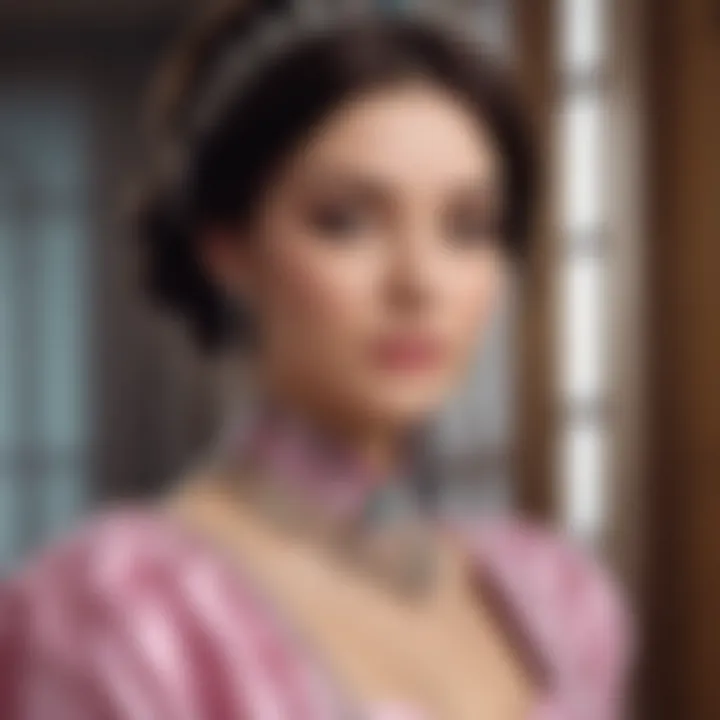
By embracing sustainable beauty, these figures encourage a broader conversation about the importance of self-care that respects the environment. The integration of eco-conscious principles into beauty routines demonstrates that sustainability does not mean sacrificing quality or luxury.
"Every piece of clothing or product we choose has the power to make a statement about the world we want to live in."
The eco-conscious princess embodies a more responsible approach to beauty and fashion, ultimately highlighting the importance of aligning personal style with environmental ethics. As these practices gain traction, they advocate for a shift towards a more sustainable and mindful future, influencing not only the fashion-forward individuals but society at large.
Empowerment through Princess Identity
The concept of princess identity has evolved significantly in modern culture. In contrast to the traditional imagery of an untouchable fairy-tale figure, contemporary princesses embody empowerment and self-expression. This evolution brings forth a new meaning, where being a princess transcends royal lineage and is rooted in personal strength and confidence.
Among the key aspects of this empowerment is the emphasis on individual choices and self-identity. Modern princesses are no longer defined solely by marriage or birth. Instead, they are celebrated for their talents, intelligence, and the ability to impact society positively. Their image is a testament to the potential of women achieving goals through hard work and self-belief.
Empowerment through princess identity encourages women to embrace their uniqueness and to challenge societal expectations. This includes being vocal about their ambitions and managing scrutiny effectively. By reassessing what being a princess entails, women can take control of their narratives and redefine their roles in the world.
Redefining Power and Grace
Redefining power and grace involves looking beyond superficial appearances. Today’s princess figures embody both strength and elegance, demonstrating that grace can coexist with assertiveness. This new paradigm fosters a culture where women are encouraged to be both feminine and fierce.
Power is not merely about authority. It includes emotional resilience, intelligence, and the capability to inspire others. Figures such as Meghan Markle and Kate Middleton demonstrate this duality well. Their style choices reflect not just fashion sensibilities but also personal stories and cultural messages.
- Addressing Social Issues: Modern princesses often leverage their status to spotlight critical social issues. They use their platforms to raise awareness and advocate for change, setting an example for others.
- Confidence in Public Life: Engaging in charity work, public speaking, and community service reflects a commitment to making a difference. This reinforces the idea that being a princess can equate to active citizenship and leadership.
Fashion as a Tool for Self-Expression
Fashion serves as a vital vehicle for self-expression among modern princesses. It is no longer confined to luxurious gowns and ornate tiaras. Today, royal figures use fashion to communicate their identities and values.
Outfits can speak volumes about heritage, personality, and even stance on current events. For instance, when Michelle Obama wore the designs of young, diverse designers, it marked a significant statement in support of the fashion industry’s evolution toward inclusivity.
- Personal Style Choices: By choosing what to wear, modern princesses convey their views on tradition and modernity. Clothes become a reflection of personal beliefs, cultural influences, and the desire for authenticity.
- Breaking Stereotypes: When princesses opt for casual, relatable attire or sustainable fashion, they challenge the stereotypes associated with royalty. This encourages a broader acceptance of diverse forms of self-expression that resonate with women of varying backgrounds.
In summary, the evolving role of modern princess identity intertwines empowerment with personal style. This movement encourages women to redefine their views on power and grace, using fashion as a dynamic tool for self-expression. The archetype of the princess is now one that inspires active participation in societal change and authentic self-representation, which is essential in today’s context.
Mindfulness in Fashion Choices
Mindfulness in fashion choices has become increasingly significant in recent years. The modern princess, as a cultural archetype, embodies not just an elegant style but also a thoughtful approach to consumption. This idea extends beyond simply choosing what to wear; it includes being aware of the broader implications of those choices.
Being mindful influences how individuals curate their wardrobes. Instead of engaging in fast fashion trends that promote overconsumption, many women now lean towards pieces that reflect their values. This shift enhances personal expression while reducing environmental impact. Consumers are questioning the true cost of their fashion decisions. They consider factors such as materials, labor practices, and sustainability. This consciousness fosters a deeper connection to the garments themselves, making clothing not just an accessory, but a statement.
Cultivating a Conscious Style
Cultivating a conscious style involves selecting clothing that resonates with personal and ethical beliefs. The aim is to develop a wardrobe that aligns with one’s lifestyle and values. Key elements to consider include:
- Quality over quantity: Investing in high-quality pieces ensures longevity and reduces waste over time.
- Ethically sourced materials: Opting for organic cotton or recycled fabrics can minimize the ecological footprint.
- Practicality and versatility: Choosing items that can be styled in multiple ways encourages thoughtful pairing rather than impulse buying.
This consciousness will often lead women to explore local designers or small businesses. It also inspires them to commit to a capsule wardrobe, which promotes fewer, yet more purposeful, selections. A conscious wardrobe can transform how one interacts with fashion, shifting the focus from trends to personal significance.
The Role of Upcycling in Modern Fashion
Upcycling stands out as a key component of mindful fashion. It encourages creativity while addressing the issues related to waste in the clothing industry. The act of upcycling involves transforming unused or outdated items into something new and useful.
Women participating in this trend find unique ways to breathe new life into their clothing. They may:
- Refashion old garments: Changing the style or fit of an item keeps it out of landfills and in circulation.
- Combine different materials: Mixing fabrics can create unique, one-of-a-kind pieces.
- Participate in workshops: Learning skills like sewing and crafting allows one to understand the effort behind each clothing item.
Upcycling not only promotes sustainability but also encourages self-expression. Each upcycled piece tells a personal story, making each wardrobe item significant.
"In a world where fashion can often feel disposable, upcycling transforms our relationship with clothing, allowing each individual to create richness in their style through transformation and creativity."
Combining mindfulness with the practice of upcycling demonstrates the princess's modern evolution. Embracing these practices fosters a sense of empowerment, encouraging women of all ages to engage with fashion on a deeper level.
The Intersection of Art and Fashion in Princess Culture
The connection between art and fashion within the context of princess culture is significant. Both domains serve as expressions of ideals, aspirations, and identity. When we think of modern princesses, we often consider their sartorial choices. These choices reflect broader cultural trends and artistic movements. Princesses today are not just about traditional royal wear; they embody a mix of innovation and heritage. This intersection allows a deeper understanding of the concept of royalty and its evolution.
Art influences fashion in various ways. For instance, designers often draw inspiration from paintings, sculptures, and other artworks. They translate these inspirations into garments that resonate with their audience. The incorporation of fine art into fashion brings a level of sophistication and narrative that is hard to ignore. Moreover, royal aesthetics, characterized by elegance and grace, are frequently mirrored in contemporary design elements. This synergy between art and fashion enriches both fields, forging new paths in how we perceive princesses.
Influence of Fine Art on Modern Fashion
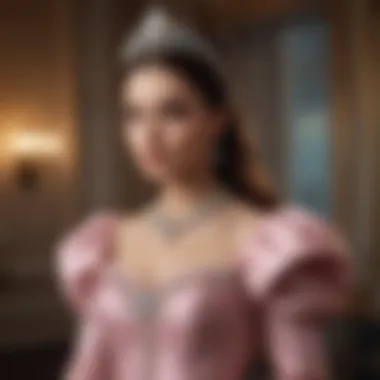
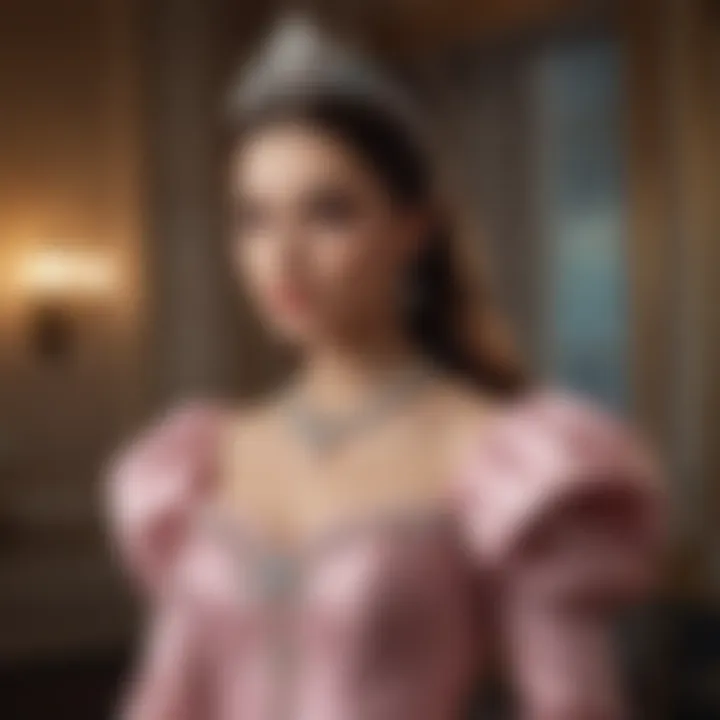
The impact of fine art on fashion is profound. This influence can be seen in the way fashion designers create their collections. For example, brands such as Dolce & Gabbana and Valentino have often referenced classic artworks in their designs. Fabrics, prints, and cuts derived from art history allow wearers to engage in a dialogue between tradition and modernity.
Additionally, the incorporation of bold colors and unique materials echo the vibrancy found in fine art. A dress inspired by Van Gogh’s brushstrokes or a suit referencing the elegance of a Renaissance portrait transforms clothing into wearable art.
The resulting pieces do not merely serve a utilitarian purpose. They become narratives that reflect personal identity and societal values. As modern princesses showcase these garments, they elevate fashion to a form of expression that aligns with the cultural richness of art. This relationship underscores the importance of aesthetics in establishing a connection with audiences, and in reinforcing the notion that fashion can be an art form in its own right.
Fashion Exhibitions Celebrating Royal Aesthetics
Fashion exhibitions have emerged as powerful platforms to celebrate royal aesthetics. Events like the Met Gala or exhibits at the Victoria and Albert Museum highlight how fashion intersects with cultural history. These exhibitions often celebrate the craftsmanship and significance of royal attire throughout time, tracing the evolution of styles that modern princesses embody.
The curated displays provide insight into fabric choices, jewelry, and accessories that characterize royal fashion. Visitors can explore the meaning behind each piece, creating a narrative that blends emotions and stories across decades.
Furthermore, exhibitions often emphasize the craftsmanship involved in creating royal garments. The intricate details and techniques used in design demonstrate the connection between dedication to art and the ideals of princes. Such events not only celebrate the past but influence how fashion is perceived in the future.
The Role of Technology in Modern Beauty
As the fashion and beauty industry continues to evolve, technology plays an essential role in reshaping how consumers engage with these fields. The integration of technology not only enhances the shopping experience but also influences beauty standards and practices. In this section, we will explore two critical elements: virtual try-ons and social media's powerful impact on trends. Both elements showcase how technology empowers the modern princess to make informed choices about fashion and beauty.
Virtual Try-ons and Fashion Apps
Virtual try-ons and fashion apps have revolutionized how individuals select beauty products and apparel. With augmented reality, users can virtually apply makeup or see how clothing fits without ever stepping into a store. This technology offers significant advantages:
- Convenience: Users can experiment with various products anytime and anywhere.
- Confidence: It eliminates the guesswork involved in choosing shades or styles, boosting self-assurance in making purchases.
- Trial without commitment: Consumers can test different looks or outfits without spending money on items that may not suit them.
Brands such as Sephora and ASOS have embraced this technology, allowing users to view products on themselves before buying. This shift not only enhances the shopping experience but also aligns with the modern princess image, emphasizing empowerment through informed decision-making.
"Technology gives consumers the tools to express themselves without the limitations of traditional shopping methods."
The Influence of Social Media on Trends
Social media has become a cornerstone of fashion and beauty discussions, influencing trends almost instantaneously. Platforms like Instagram, TikTok, and Pinterest serve as showcases for creativity and self-expression. Here are some notable implications of social media on modern beauty:
- Instant access to trends: Users can discover new products and styles in real-time, influencing personal choices rapidly.
- Democratization of beauty: Aspiring content creators redefine beauty standards, moving away from traditional models. This opens up discussions around inclusivity and representation.
- Community engagement: Platforms allow users to connect over shared interests, fostering dialogue about beauty practices and challenges.
Modern princesses are not just passive consumers; they are active participants in the fashion conversation. By using social media, they curate their identities and influence their circles, reinforcing that each individual has a unique role in shaping beauty standards.
Global Perspectives: Princess Archetypes around the World
In examining the evolving role of the modern princess, it becomes essential to explore the various archetypes that exist across cultures. These archetypes do not merely reflect the states of royalty; they also often embody societal values, aspirations, and the dynamic relationship between tradition and modernity. The modern princess, as illustrated through diverse lenses, serves as a point of reference for beauty and fashion ideals, which can vary significantly by region.
Cultural contexts shape how princesses are portrayed in fashion and beauty. Consider the Japanese concept of "Hime" which signifies princess or lady, often associated with grace and poise. In contrast, traditional Indian representation of royalty encapsulates the majestic intricacies of attire, like the elaborate sarees of royalty that symbolize richness in culture and history. It is crucial to understand these cultural representations as they carry nuanced meanings tied to their respective societies and influence the global fashion narrative.
Additionally, thinking about modern media, these archetypes can be seen evolving rapidly. In the globalized world, the interpretation of what a princess may look like or represent is altered. A princess in Hollywood may reflect ideals of freedom and independence while a European princess may still invoke a sense of heritage and obligation. As such, fashion and design adopt these interpretations, shaping trends that resonate with individuals from different backgrounds.
Cultural Representations of Royalty
Cultural representations of royalty extend beyond just visual aesthetics; they influence perceptions of identity and status in broader society. These representations are often entrenched in historical narratives that influence current trends in fashion and beauty among women. For example, the classic works of art featuring princesses in Europe have shaped the fashion landscape from delicate lace to luxurious silk. In addition, the historical significance of royal portraits informs modern fashion designers who are revisiting these designs for contemporary collections.
Moreover, with the advent of global connectivity through social media and fashion platforms, the influence of different cultures has become more prevalent. Platforms like Instagram and Pinterest allow for the blending of styles and cultural references, allowing women from various backgrounds to adapt and reinterpret what being a princess means to them today. By showcasing diverse beauty ideals, these identities are being reshaped, reflecting the multifaceted nature of contemporary society.
Influence on Contemporary Women’s Empowerment Movements
The representations of princess archetypes extend into larger social movements, as contemporary narratives surrounding empowerment often draw upon them. The image of a princess has transitioned from being merely ornamental to becoming a symbol of strength, perseverance, and independence for women. Today’s princesses, seen through the likes of Meghan Markle or Kate Middleton, often challenge traditional roles, actively participating in social issues and championing women's rights.
The modern princess does not conform to prescribed notions of beauty but instead emphasizes individuality and leadership. This shift encourages women across cultures to embrace their faults and strengths, fostering a sense of community and belonging. Movements that advocate for diversity and inclusivity in beauty standards resonate deeply within these representations, allowing women's empowerment to flourish in the process.
"The evolving princess archetype is not just about elegance; it's about identity, resilience, and the embrace of one’s uniqueness in a world that often tries to conform us to very traditional roles."
Ending: The Future of the Modern Princess
The modern princess continues to adapt to the rapidly changing societal landscape. This examination is key to understanding how contemporary women perceive femininity, power, and aesthetics in fashion and beauty. The role of the princess, traditionally viewed as distant and unattainable, is evolving into a symbol of empowerment and accessibility. Today’s princess is relatable, influencing trends while advocating for environmental sustainability and inclusivity.
The focus on sustainable practices in the fashion industry adds another layer of complexity to the concept of the modern princess. As women become increasingly conscious of their consumption habits, the princess archetype reflects a pursuit of ethical choices. The future of this identity is not just about glamour; it is deeply tied to global issues like climate change and social justice.
Embracing Change and the New Aesthetic
In the context of embracing change, the new aesthetic signifies a blend of tradition and modernity. The definition of beauty is continually shifting, allowing diverse representations to thrive. Women now see themselves in these royal figures, as they embody resilience and individuality.
Several factors contribute to the evolving aesthetic of the modern princess:
- Authenticity: A growing emphasis on real-life experiences and authenticity attracts fans. The understanding that vulnerabilities can coexist with beauty makes the modern princess more relatable.
- Cultural Sensitivity: Awareness of cultural significance leads to a more inclusive representation of princesses from various backgrounds, showcasing different styles and beauty standards.
- Technological Influence: Advances in technology allow for a democratization of fashion, where apps and social media platforms amplify diverse voices in the representation of princesses.
"The evolving role of the modern princess challenges traditional notions of beauty and power, making room for individuality and sustainability."
As the modern princess integrates these principles into fashion and beauty, she paves the way for future generations to redefine what royalty means in their lives. By embracing change, modern women can confidently assert their identities while making impactful choices that resonate on a global scale.



